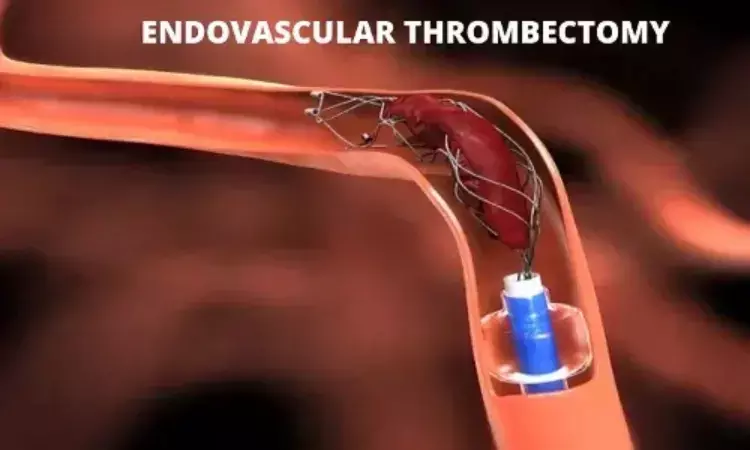- Home
- Medical news & Guidelines
- Anesthesiology
- Cardiology and CTVS
- Critical Care
- Dentistry
- Dermatology
- Diabetes and Endocrinology
- ENT
- Gastroenterology
- Medicine
- Nephrology
- Neurology
- Obstretics-Gynaecology
- Oncology
- Ophthalmology
- Orthopaedics
- Pediatrics-Neonatology
- Psychiatry
- Pulmonology
- Radiology
- Surgery
- Urology
- Laboratory Medicine
- Diet
- Nursing
- Paramedical
- Physiotherapy
- Health news
- Fact Check
- Bone Health Fact Check
- Brain Health Fact Check
- Cancer Related Fact Check
- Child Care Fact Check
- Dental and oral health fact check
- Diabetes and metabolic health fact check
- Diet and Nutrition Fact Check
- Eye and ENT Care Fact Check
- Fitness fact check
- Gut health fact check
- Heart health fact check
- Kidney health fact check
- Medical education fact check
- Men's health fact check
- Respiratory fact check
- Skin and hair care fact check
- Vaccine and Immunization fact check
- Women's health fact check
- AYUSH
- State News
- Andaman and Nicobar Islands
- Andhra Pradesh
- Arunachal Pradesh
- Assam
- Bihar
- Chandigarh
- Chattisgarh
- Dadra and Nagar Haveli
- Daman and Diu
- Delhi
- Goa
- Gujarat
- Haryana
- Himachal Pradesh
- Jammu & Kashmir
- Jharkhand
- Karnataka
- Kerala
- Ladakh
- Lakshadweep
- Madhya Pradesh
- Maharashtra
- Manipur
- Meghalaya
- Mizoram
- Nagaland
- Odisha
- Puducherry
- Punjab
- Rajasthan
- Sikkim
- Tamil Nadu
- Telangana
- Tripura
- Uttar Pradesh
- Uttrakhand
- West Bengal
- Medical Education
- Industry
Patients with acute ischemic stroke after cardiac intervention less likely to be treated with endovascular thrombectomy: JAMA

USA: Patients with ischemic stroke after cardiac intervention are less likely to be treated with endovascular thrombectomy (EVT), a recent study published in JAMA Neurology has shown.
The researchers found that stroke patients with cardiac intervention had lower EVT rates compared with those without cardiac intervention. After cardiac intervention, thrombectomy was tied to a 2-fold higher chance of discharge home.
Cardiac surgery is associated with a higher ischemic stroke risk compared to other surgical procedures, and cardiac surgery is often treated separately in guidelines on perioperative stroke prevention and management. Prior research indicates that perioperative ischemic stroke occurs in 1% to 2% of individuals undergoing cardiac surgery and with open cardiac interventions rate is typically higher than with percutaneous procedures.
Endovascular thrombectomy (EVT) is an effective treatment for ischemic stroke and may be particularly important for cardiac intervention patients who often cannot receive intravenous thrombolysis. However, data remain sparse on the use of EVT treatment for stroke after cardiac intervention, which is a critical knowledge gap. To fill this knowledge gap, Adam de Havenon, Yale University, New Haven, Connecticut, and colleagues examined trends in EVT for ischemic stroke during hospitalization of patients with cardiac interventions vs those without in the United States.
For this purpose, the research team performed a retrospective analysis using data for 4888 US hospitals from the 2016-2020 National Inpatient Sample database. Participants were adults with ischemic stroke, who were organized into study groups of hospitalized patients with cardiac interventions vs without.
If the individuals had either procedure before admission, EVT before cardiac intervention, EVT more than three days after admission or cardiac intervention, or endocarditis, they were excluded.
The odds undergoing EVT were calculated using multivariable logistic regression. Adjustments were made for stroke severity in the subgroup of patients with a National Institutes of Health Stroke Scale (NIHSS) score documented. As a secondary outcome, the odds of discharge home by EVT status after cardiac intervention were modelled.
Based on the study, the researchers reported the following findings:
- Among 634 407 hospitalizations, the mean age of the patients was 69.8 years, 50.2% were male. A total of 12 093 had a cardiac intervention.
- An NIHSS score was reported in 218 576 admissions, 34.7% without cardiac intervention and 21.0% with cardiac intervention.
- EVT was performed in 3.8% of patients without cardiac intervention vs 1.6% of those with cardiac intervention.
- After adjustment for potential confounders, EVT was less likely to be performed in stroke patients with cardiac intervention vs those without (adjusted odds ratio [aOR], 0.27), which remained consistent after adjusting for NIHSS score (aOR, 0.28).
- Among individuals with a cardiac intervention, receiving EVT was associated with a 2-fold higher chance of discharge home (aOR, 2.21).
The study found that patients hospitalized with acute ischemic stroke and cardiac intervention may be less than half as likely to receive EVT as those without cardiac intervention.
"Given the known benefit of endovascular thrombectomy, even in patients with large volumes of tissue that is not salvageable through revascularization, there is a need to better understand the reasons for lower rates of EVT in this patient population," the research team concluded.
Reference:
de Havenon A, Zhou LW, Koo AB, et al. Endovascular Treatment of Acute Ischemic Stroke After Cardiac Interventions in the United States. JAMA Neurol. Published online January 29, 2024. doi:10.1001/jamaneurol.2023.5416
Dr Kamal Kant Kohli-MBBS, DTCD- a chest specialist with more than 30 years of practice and a flair for writing clinical articles, Dr Kamal Kant Kohli joined Medical Dialogues as a Chief Editor of Medical News. Besides writing articles, as an editor, he proofreads and verifies all the medical content published on Medical Dialogues including those coming from journals, studies,medical conferences,guidelines etc. Email: drkohli@medicaldialogues.in. Contact no. 011-43720751


